Posts
We have a new design of Indigo scarf / stole.
Its called ‘border fade’ and it looks quite dramatic!
This scarf is currently for sale on our etsy shop for international (non-Japanese) customers, our online shop for Japanese customers. We sometimes do events such as markets in and around Awaji Island, and we are hoping to open a real life shop and participatory workshop in Awaji Island, Hyogo, Japan sometime in 2020!
Here at Ai Aii we dye with our totally natural, traditional Japanese indigo. The indigo is from leaves harvested in Japan that are fermented and stored for 1 year until ready to use.
Its 100% linen, perfect for any season.
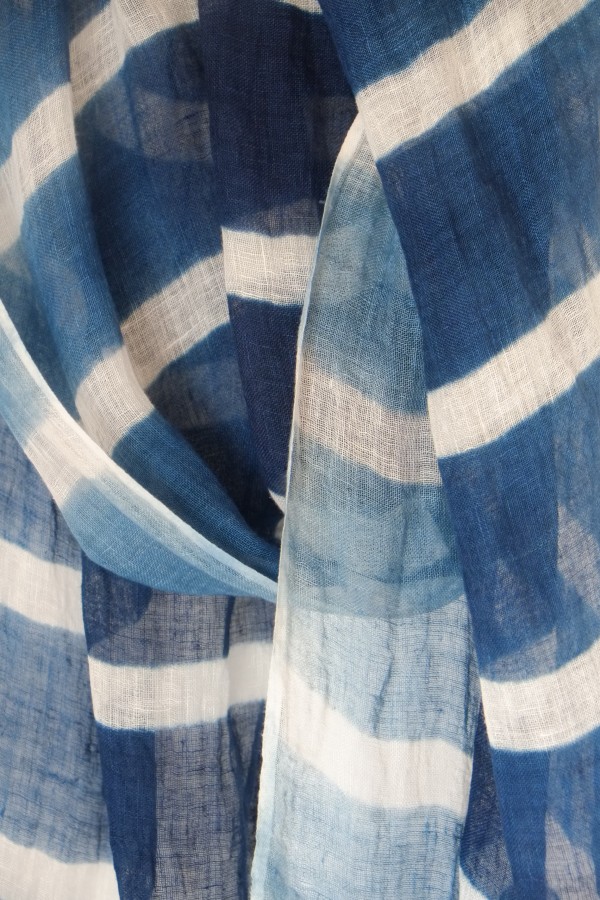
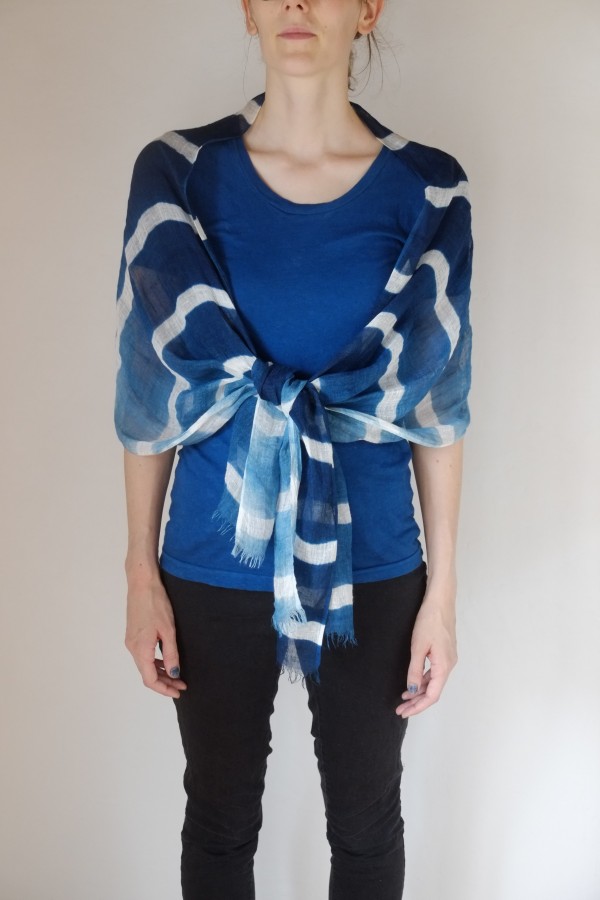
There are various ways you could choose to wear this scarf. Its pretty long, it could be tied in a bow or just thrown over a shoulder.
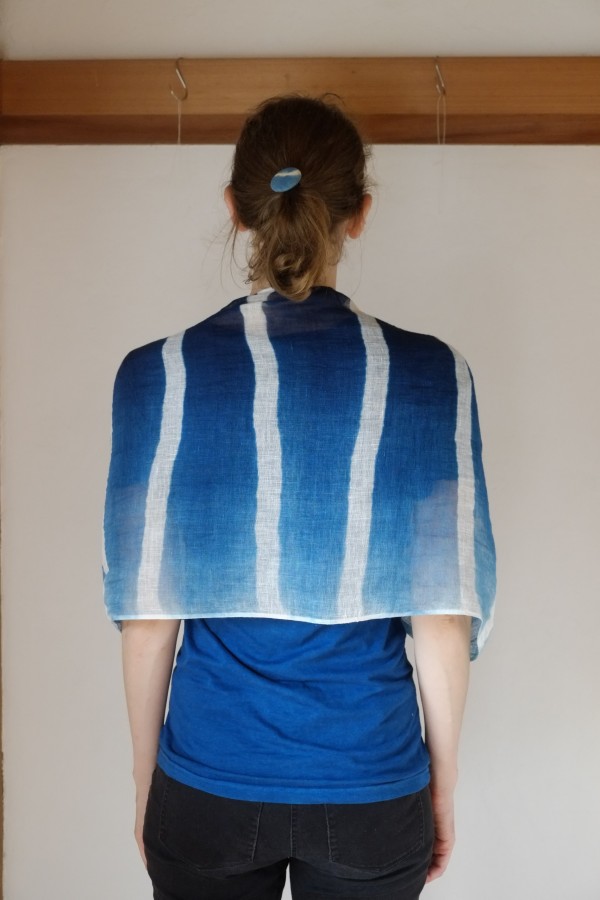
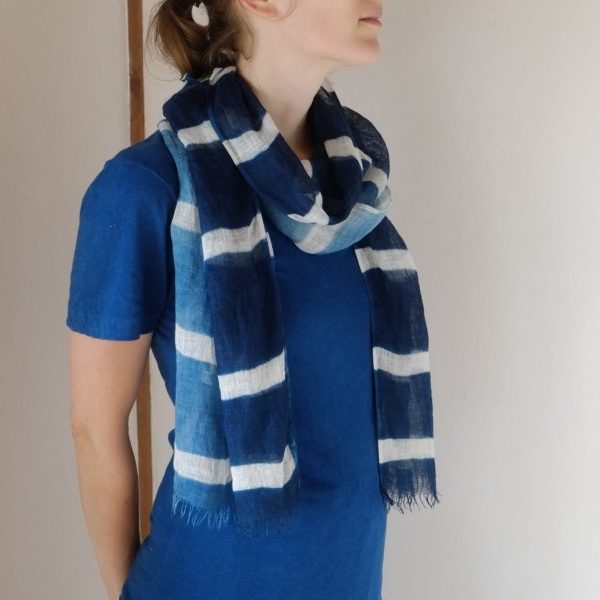
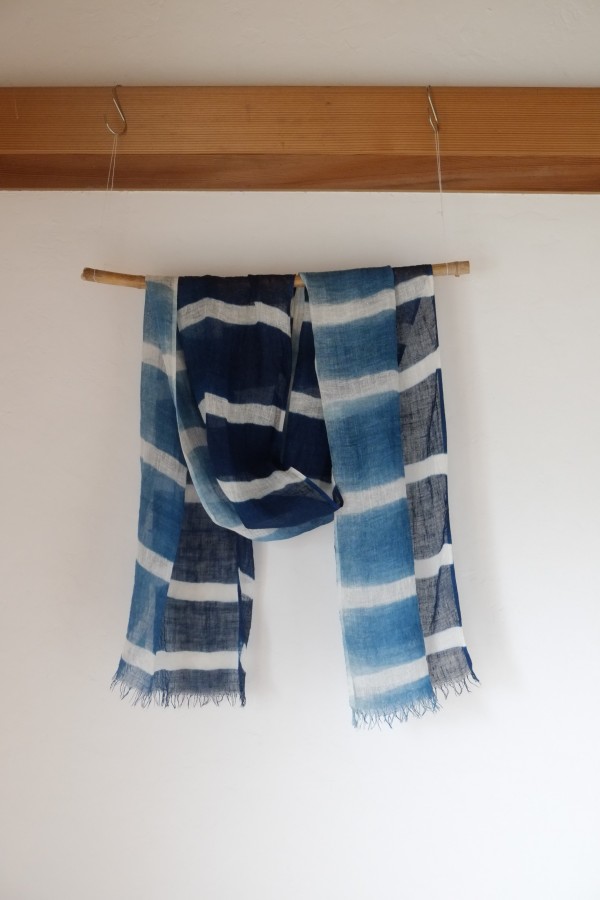
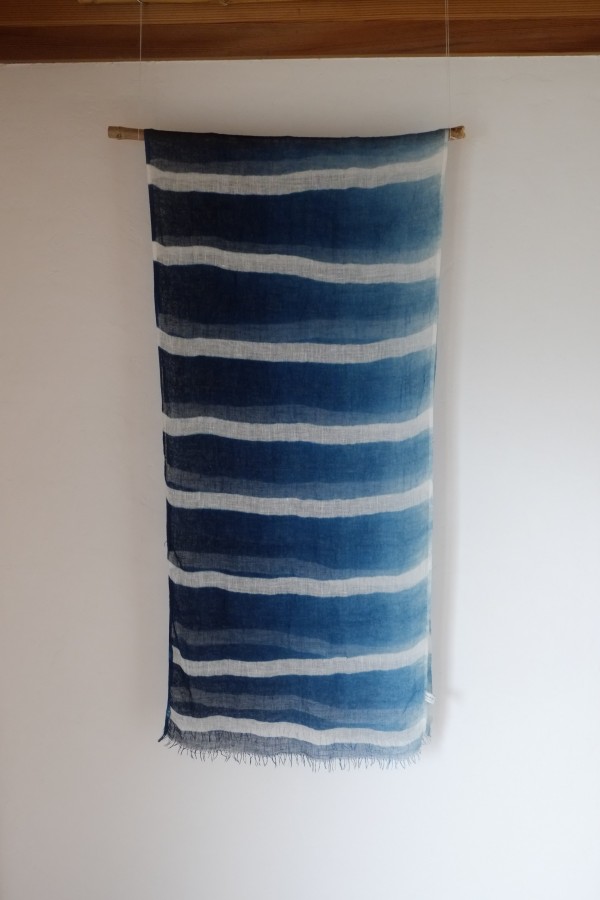
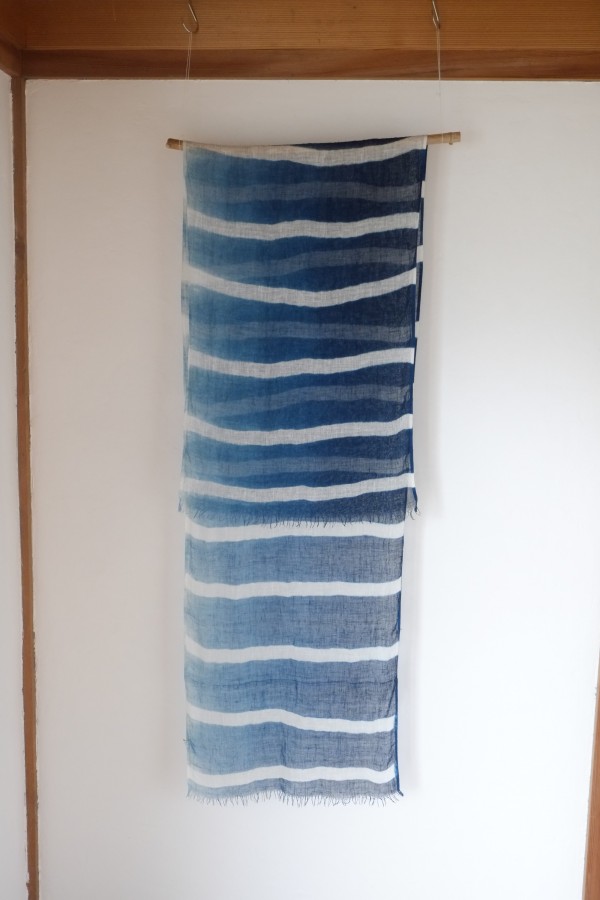
To make this pattern the scarf is folded into a concertina (zig-zag) with a width of about 20cm. We then fasten the ends with strong rubber bands and clamp in the middle with a G-clamp. The clamp is necessary to hold the middle together, otherwise the wood will bow and let indigo and oxygen down the middle of the scarf. Folding and squashing between wooden shapes or planks is called ‘itajime’ in Japanese. I varnished these planks so that they absorb less dye. Wood is like a natural fiber so it will dye like fabric, getting progressively darker and soaking up all the precious (expensive) dye.
The next stage is to dye with a gradient, or ombre, which means dipping the darker side in for a longer, and for more times than the lighter end. I think the darkest end had about 6 dips of between 30 seconds to 3 minutes each). I also try not to hold it in one place for too long or a line/edge will emerge.
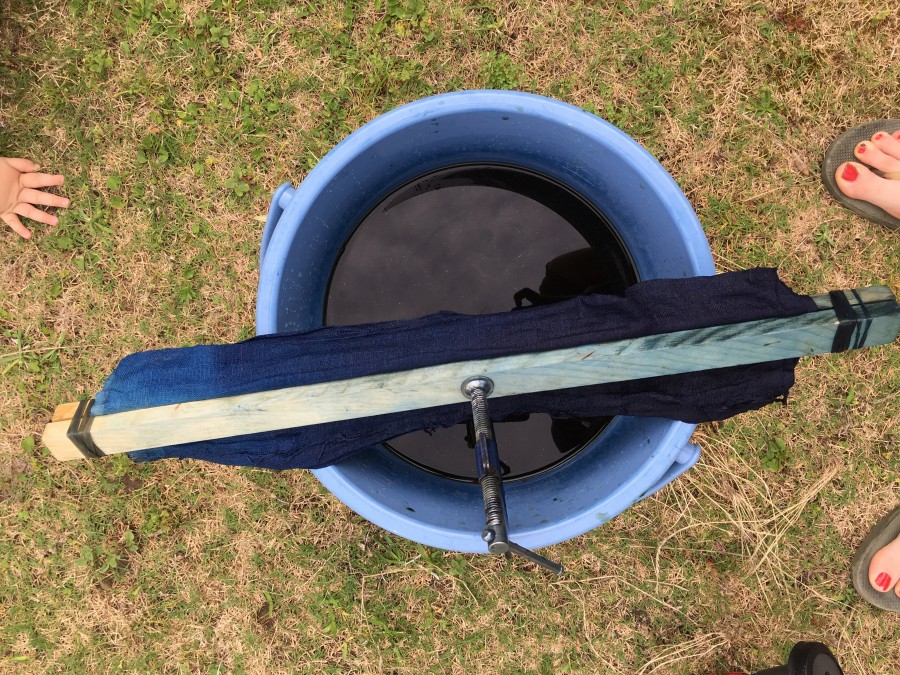
Here I removed the wooden sticks and am about to unfold the concertina.
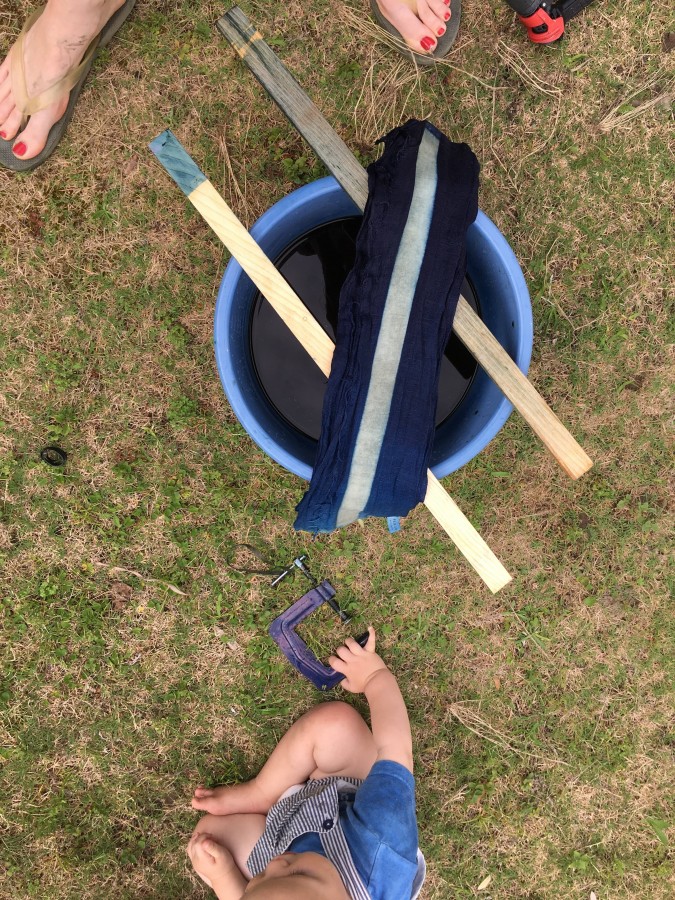
Reveal! It is important to remember that when wet, it appears a few shades darker than the ultimate colour.
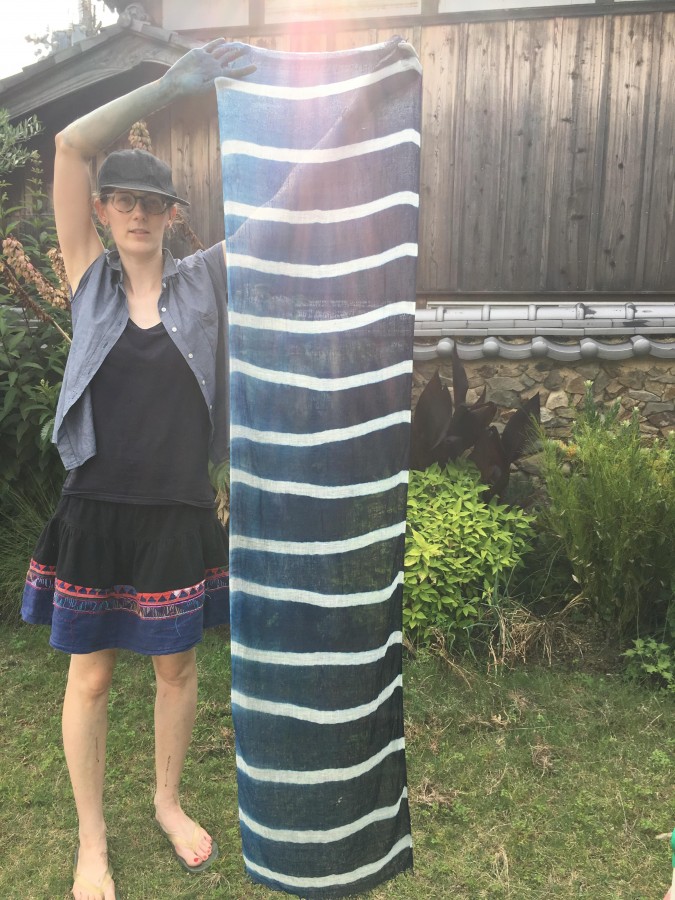
AWAJI / SHIKOKU
ART
AWAJI / SHIKOKU
AWAJI / SHIKOKU